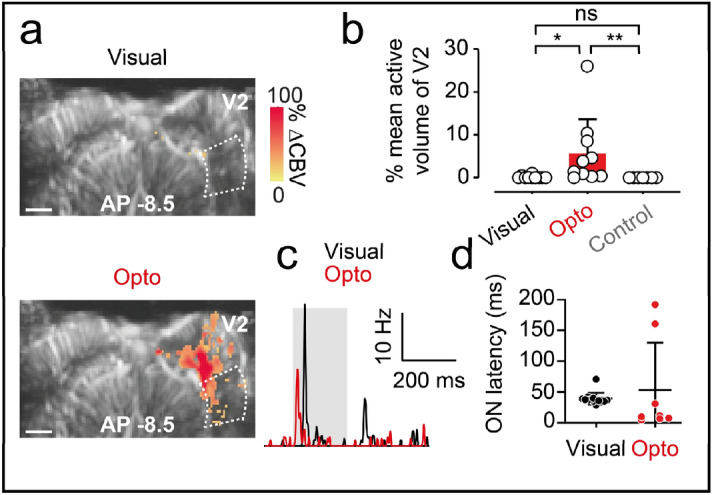Figure 4.

Spread of the optogenetic activation to V2. (a) fUS activation maps obtained during visual stimulation of the contralateral eye (top) and optogenetic stimulation of the ChrimsonR-expressing ipsilateral V1 area (bottom) and control stimulation of the uninjected contralateral area from a single imaging plane (AP − 7.5 mm) containing the V2 area. White dashed lines delimit the ipsilateral V2 area. Scale bar: 2 mm. (b) Percentage active volume of V2 after visual, optogenetic or control stimulation. For both visual and optogenetic stimulation, we show the volumes of V2 ipsilateral to the injection, whereas, for the control, we shown the volume of the contralateral V2. Open circles represent mean values over all imaging planes for each animal (visual and optogenetic, n = 1, Wilcoxon signed-rank test, one-tailed, p = 0.002, n = 7 for control, Mann–Whitney test, one-tailed, p = 0.0004), bars represent the mean over all animals. (c) SDF of a typical V2 single unit responding to visual (black line) and optogenetic (red line) stimulation of the ipsilateral V1 area. (d) ON latencies of V1 and V2 single-unit responses to visual (V1, n = 33 units, V2, n = 14 units) or optogenetic stimulation of V1 (V1, n = 76 units, V2, n = 8 units). The irradiance used for optogenetic and control stimulation was 140 mW mm−2.
